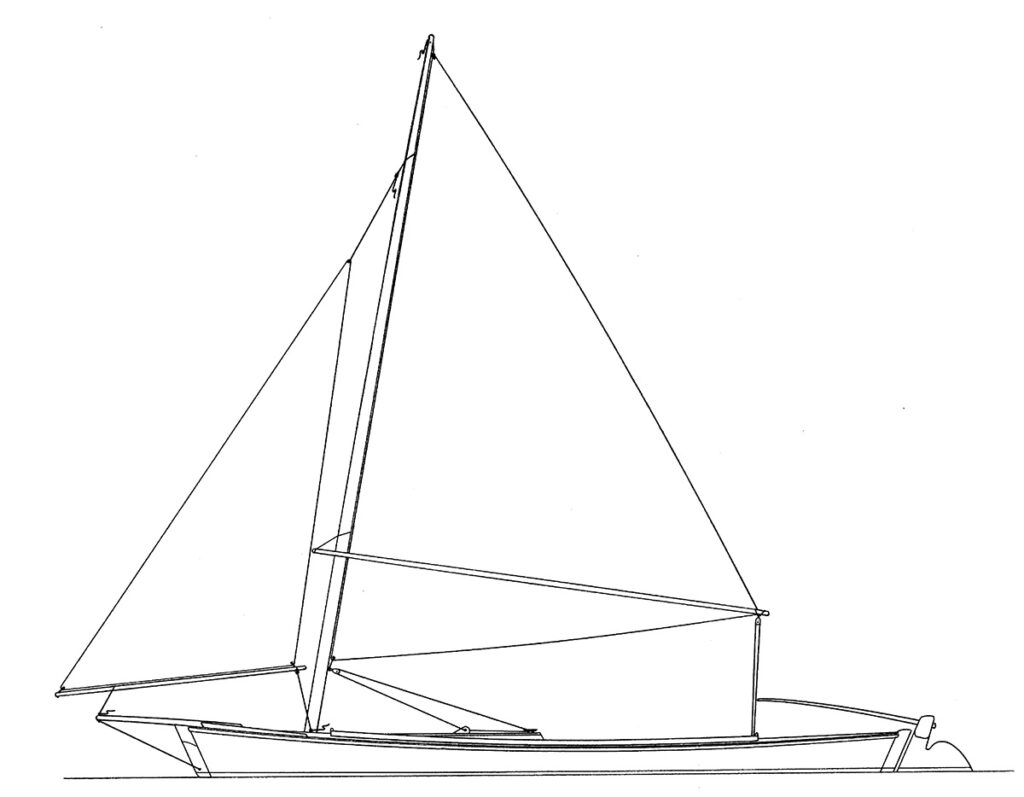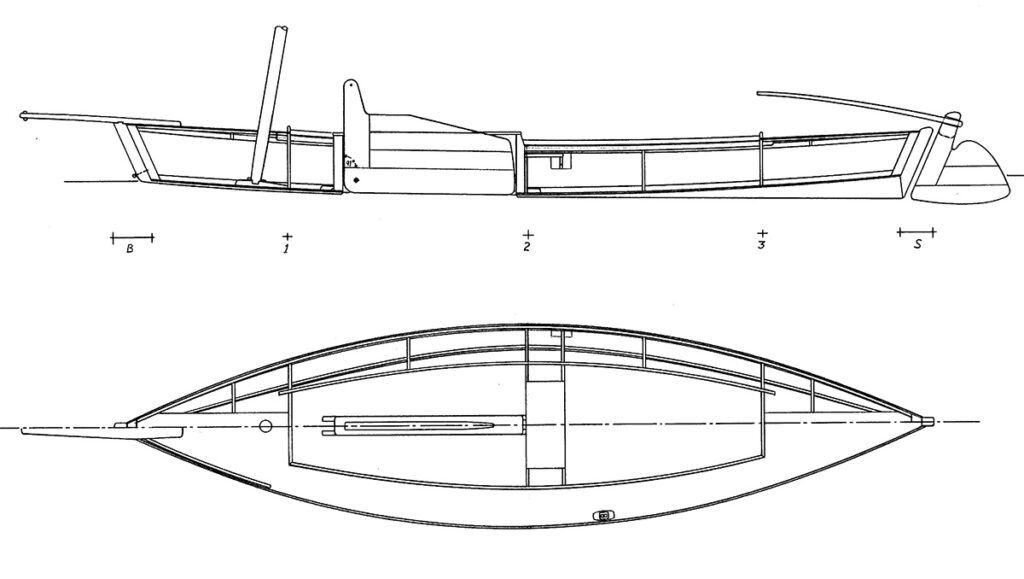| The boats are very fast and Weatherly, and handle somewhat differently than anything I have ever sailed. Mallard has lee helm in light air (it helps to keep the centerboard all the way down), but develops very slight weather helm (desirable) in more wind. When the boat is overpowered, the jib is taken in, and she balances and handles perfectly under mains’l alone. Being so long and narrow, the boat is slow to turn. To maneuver in tight spaces, the centerboard MUST be down! Even so, I found Mallard difficult to turn and dock in the very narrow canal where she is berthed, and because the wind blows straight up the canal, I have twice found myself horribly tangled in the mangroves at the lee end! I also rammed the cement sea wall trying to round up to my dock, leaving a big dent in the end of the bowsprit. Of course, to add insult to injury, all this happened on a first date with a very lovely bikini-clad woman, and the entire spectacle was witnessed by the whole neighborhood, which came out to watch! I got it right next time. In short, Mallard, and perhaps crabbing skiffs in general, are very sensitive, fast vessels which require a higher level of consciousness and skill to handle than many of the other vessels shown here, particularly in tight spaces. But once in open water, the craft are like greased lightning. It’s not as much that they lack responsiveness as it is that they are LONG (the distance between centerboard and rudder is extremely far), need room to turn in, and are so damn FAST that you really have to think ahead! |

